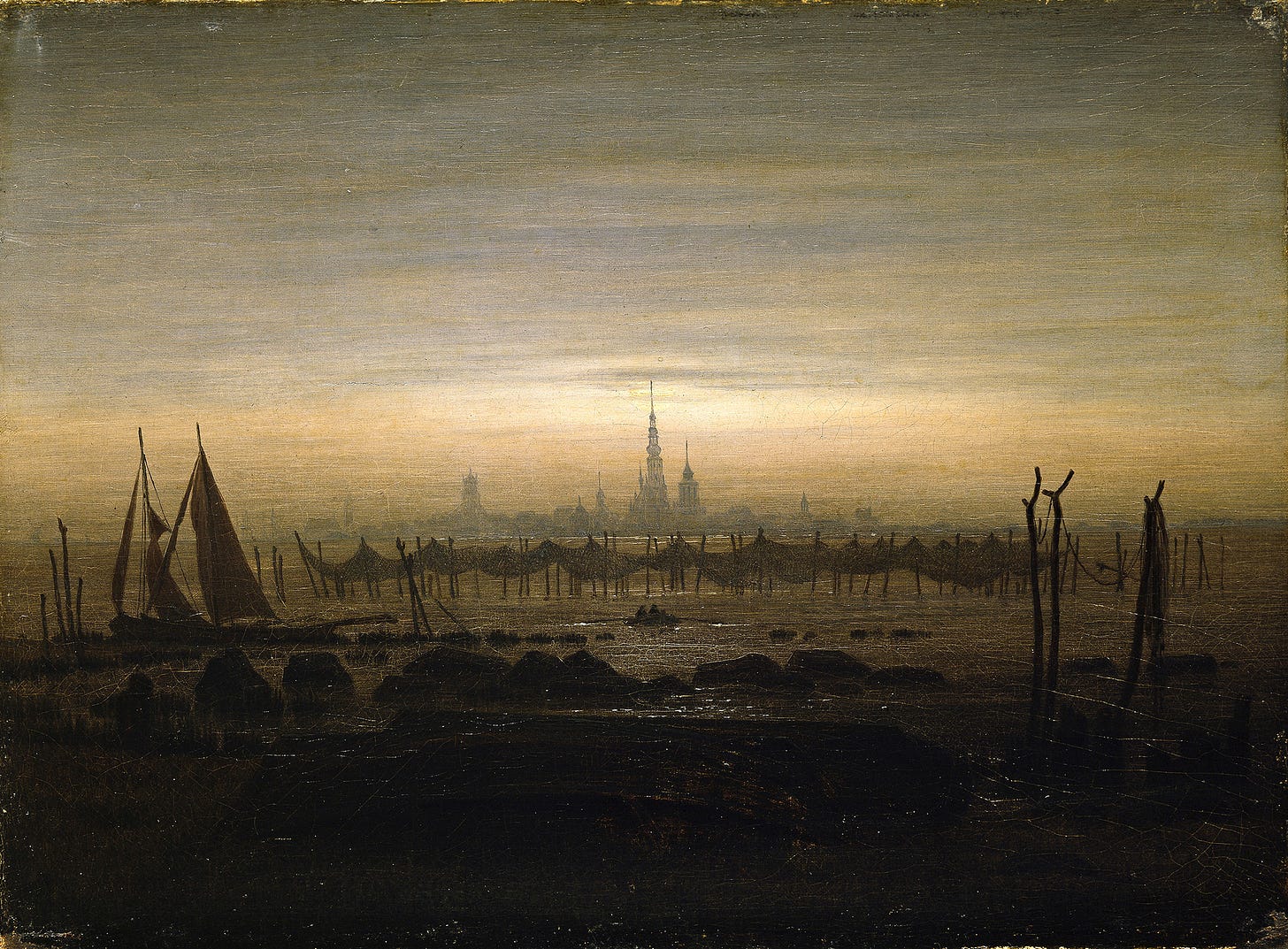This is the third part of a three-part series. Part II | Part III
“Let's have a quick look at what a lot of science fiction lacks. Briefly, these are some of the qualities I miss on the whole—passion, subtlety, irony, original characterization, original and good style, a sense of involvement in human affairs, colour, density, depth, and, on the whole, real feeling from the writer...”
—Michael Moorcock, editor of ‘New Worlds’ magazine
In the world of literature, genres constantly rise, fall, divide, and recombine. But two broad categories of books always maintain their relevance: genre fiction and literary fiction. These broad categories are determined not by aesthetics, but by goals.
Genre fiction is by far the more popular of the two, and its primary goal is to entertain. While the “genre fiction” label technically applies to any book that fits into one of those shelves at the bookstore (e.g. “Mystery”, “Fantasy”), in practice the label implies that a book is escapist. Its goal is to turn the reader’s attention away from the world by giving their mind somewhere else to live for a while.
On the other hand, literary fiction is designed to turn the reader’s attention towards the world. The goal is not to take the reader away, but to make them think more deeply about the world they inhabit and their inner lives. While literary fiction needs some escapist component to be successful as a narrative at all, its proponents usually try to distance itself from the comparatively “lowbrow” works of genre fiction.
Of course, the barrier between the two is permeable, and some qualities are desirable in both categories, like memorable characters. But there are at least three qualities that are specifically necessary in literary fiction:
A literary novel is stylish. The language of the novel isn’t simply a means to convey concrete information, but an aesthetic end unto itself. Ideally, the author also uses language in innovative ways in order to better convey inner truths.
A literary novel is moralist. The novel contains some guidance for how to live, or some analysis of how our modern society could be improved. This is the part that runs most counter to escapism— if a novel’s societal messages are “too real”, then it ceases to function as an escapist narrative.
A literary novel is timeless. Above all else, a literary novel should resonate across time. It may be anchored by some particular historical setting, but it should feel like a story that could be reaffirmed in any era. Jane Eyre may be set in 1800s England, but its literary reputation comes from its ability to describe internal experiences in a way that still resonates today. Other works may have felt similarly true at the time, but they struggle to reach us from that distant past.
The literary framework provides a playbook for most genre fiction to ascend into the literary realm. There isn’t anything about a romance, or a Western, or a mystery that precludes it from pursuing these literary goals. All an author has to do is emphasize their book’s literary qualities over its escapist elements.
However, this playbook does not work as well for fantasy or science fiction. Fantasy’s problem is straightforward: escapism is in the name. Of course, a fantasy can still strive to be moralist and timeless. But it is difficult to do so without losing the fantasy audience. Literary merit is more orthogonal to fantasy’s goals.
Science fiction, on the other hand, has a different problem. It has a third goal apart from the goals of most genre fiction and literary fiction: being scientific. A scientific novel is meant to shape the discourse around real emerging technologies in society— turning the reader’s attention towards and away from the world simultaneously.
Interestingly, science fiction has its roots in literary fiction rather than genre fiction. Many wealthy patrons of the arts were very interested in early science and welcomed a synthesis of the two. And since academia was less specialized and more concentrated at the time, men of science were typically also wealthy men of letters.
But as science became more specialized, science fiction became the domain of, well, scientists. Many of the influential science fiction writers in the first half of the 1900s were scientists first and only pursued writing full-time later in life (see: Isaac Asimov, James Tiptree, Jr). This new class of scientist-writers tended to prioritize the scientific over the stylistic, distancing themselves from the literary world.
Thus began the great divorce between science fiction and literary fiction, which continues to this day. Their divergence was perhaps greatest during the “Golden Age of Science Fiction”, when general knowledge of science hadn’t yet caught up to the rapid pace of scientific progress. This caused the genres to develop wholly distinct reading experiences, which necessarily attracted distinct reading audiences.
Reading science fiction (especially Golden Age SF), is like plunging into ice-water. The author presents some meaty scientific idea, and the reader must break it down into something digestible in order to proceed. But while reading sci-fi can be a challenge, it typically won’t leave the reader confused about where the challenge lies.
Reading literary fiction, on the other hand, is like a slow descent into the pool. A section may have some apparently surface-level meaning, but there is often some implicit truth to be grasped. That truth could be emotional subtext, double meanings; it could even just be the way the words land across the page. But the operative word here is implicit. Cliché as as it is, “show don’t tell” is still the genre’s guiding star.
While many of these scientist-writers lacked the literary chops that would win them praise from critics, the literary world also often lacked the technical chops to properly evaluate science fiction. Reclusive digital scholar Gwern has criticized “literary supremacist” misinterpretations of sci-fi, which arise when literary critics interpret falsified predictions as metaphorical statements. For example, Cordwainer Smith frequently referred to the “pain of space”, not some poetic description, but a genuine belief in the idea that spaceflight would involve literal physical pain.
Considering their differences, it is unsurprising that science fiction works struggle to receive literary recognition. Much of the 1900s saw science fiction move in a literary direction— famed editor (and engineer) Joseph Campbell tried to make science fiction into something more highbrow by emphasizing intelligent plots and character-driven stories. But sci-fi works still struggled to gain recognition as “great works” without qualification, having to settle for “great works of science fiction”.
Perhaps the greatest obstacle to marrying the two genres was the difficulty of making a work both scientific and timeless. Imagining the future requires a future to imagine in and a present to imagine from, which makes it impossible to separate a work from its temporal context. At best, a scientific work can be recognized for its prescience—getting some important future developments almost exactly right. But this “almost truth” cannot be fairly compared to the “eternal truth” of literary novels, which pull from the universality of the human experience.
The New Wave movement of the 60s and 70s tried to address this by downplaying the “science” in science fiction, distancing itself from Golden Age fiction. Some of the movement’s members, like J.G. Ballard, argued that sci-fi should reorient itself around the soft sciences and the so-called “inner space” of humanity rather than the hard sciences and outer space. Others went further, arguing that science fiction need not center science at all. By its close, the original New Wave magazine New Worlds fully identified as an experimental literary magazine rather than a scientific one.
In some ways this movement was successful: New Wave stories certainly received more positive literary press than their Golden Age predecessors. But it also faced pushback from within: many were fiercely opposed to what they saw as a literary colonization of their genre. Readers eager to preserve the “science” in science fiction embraced the still-popular magazine Asimov’s, a magazine founded in part to avoid the experimentation of the New Wave. Jonathan Lethem called the 1974 Nebula Award "a hidden tombstone marking the death of the hope that [science fiction] was about to merge with the mainstream", which passed over literary classic Gravity’s Rainbow in favor of the far more scientific work Rendezvous with Rama.
After this Great Divorce, aspiring literary writers who used sci-fi genre elements in their work tended to distance themselves from science fiction altogether. Margaret Atwood is the most prominent example of this, who created a firestorm in science fiction by describing the genre as “escapist tales about squids in outer space”.
Even authors with closer ties to sci-fi, like Kurt Vonnegut, expressed frustration with their work being typecast as “science fiction”. To be science fiction was to be escapist, mass-market, fundamentally unstylish. The 60s and 70s showed that it was okay for a literary work to touch on scientific ideas, but it had better not be too scientific.
But while the dream of literary reunification may have died in the 1970s, some science fiction authors still believed that writing the “Great American Science Fiction Novel” was possible. These efforts will be explored in Part II.









You write:
"A literary novel is moralist. The novel contains some guidance for how to live, or some analysis of how our modern society could be improved."
What is the moral guidance contained in Don Quixote? How does Cervantes analyze how our modern society could be improved?
If you don't want to address the example of Quixote, pick any other work of literary fiction.
What is the moral of Great Expectations? Or the Sound and the Fury? Or the Trial? Or Pale Fire? Or Ulysses? Or the Unnameable?
A helpful breakdown. Thank you!